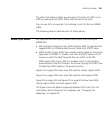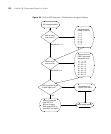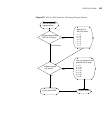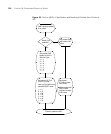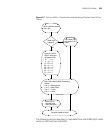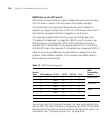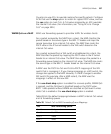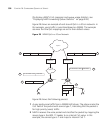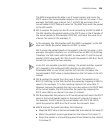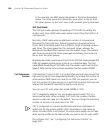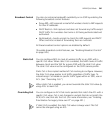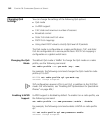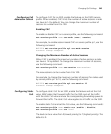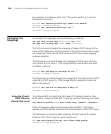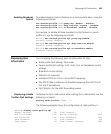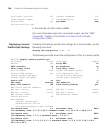
WMM QoS Mode 339
The MAP encapsulates the data in an IP tunnel packet, and marks the
DSCP value in the tunnel header based on the internal CoS value. In this
example, the MAP maps internal CoS 7 to DSCP 56 and marks the IP
tunnel header’s DSCP field with value 56. The MAP then sends the packet
to the WX switch.
3 WX A receives the packet on the IP tunnel connecting the WX to MAP A.
The WX classifies the packet based on the DSCP value in the IP header of
the tunnel packet (in this example, DSCP 56), and maps this value to an
internal CoS value (in this example, 7).
In this example, the WX interface with the MAP is untagged, so the WX
does not classify the packet based on its 802.1p value.
WX A marks the packet based on the packet’s internal CoS value. In this
example, the egress interface is in a VLAN and has an 802.1Q VLAN tag.
Therefore, the WX marks both the 802.1p value (with 7) and the tunnel
header’s DSCP value (with 56). WX A sends the packet to WX B on the IP
tunnel that connects the two switches.
In An ACL can override a packet’s marking. If a packet matches a permit
ACL mapped to the outbound traffic direction on the MAP port,
Distributed MAP, or user VLAN, and the ACL sets the CoS value, the
tunnel header’s DSCP value is marked based on the CoS value in the ACL
instead.
4 WX B receives the packet from the Layer 3 cloud. The packet has an
802.1Q VLAN tag, so the WX classifies the packet by mapping its 802.1p
value (in this example, 7) to the matching internal CoS value (also 7).
However, because the packet also has a non-zero value in the DSCP field
of the tunnel header, the WX reclassifies the packet by mapping the
DSCP value (56) to an internal CoS value (7) instead.
5 WX B encapsulates the packet in an IP tunnel packet and marks the DSCP
value in the tunnel header based on the packet’s internal CoS value. In
this example, the WX marks the tunnel header with DSCP 56. WX B
sends the packet to MAP B on the IP tunnel that connects them.
6 MAP B receives the packet and does the following:
Maps the DSCP value in the tunnel header (56) to an internal CoS value (7).
Marks the packet’s service type based on the internal CoS value (7).
Places the packet in a forwarding queue (Voice) based on the internal
CoS value (7).



